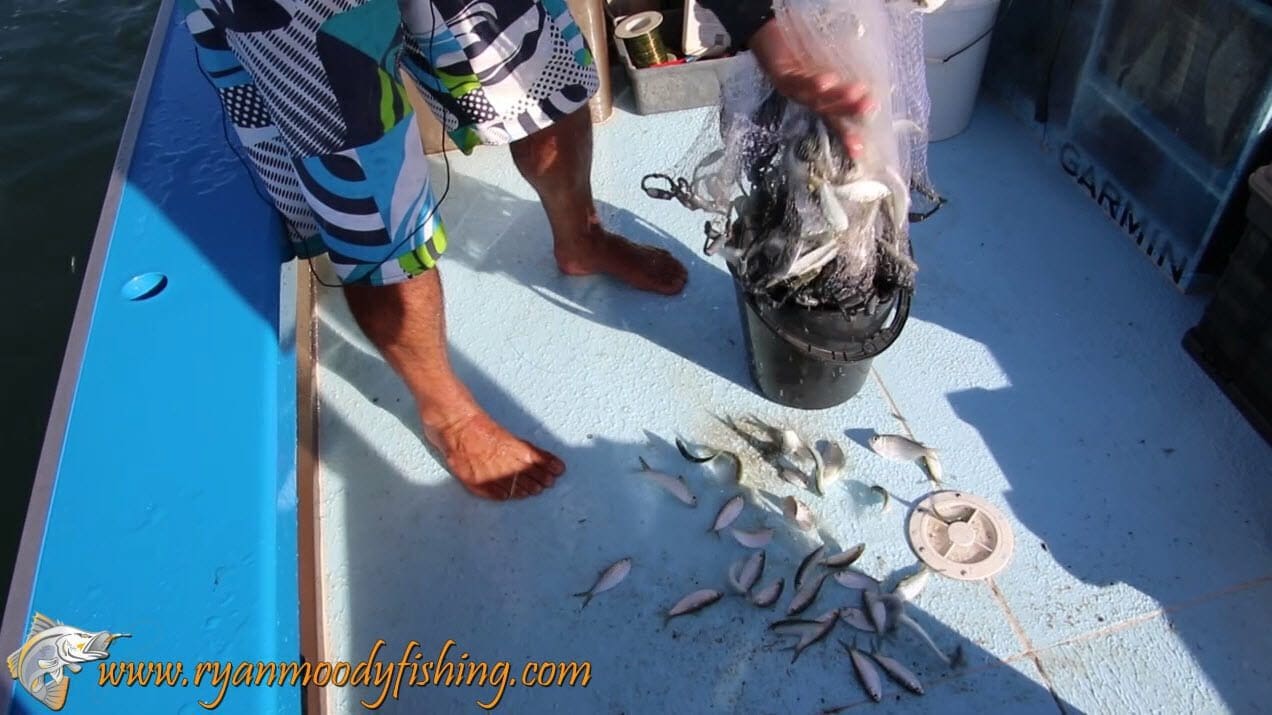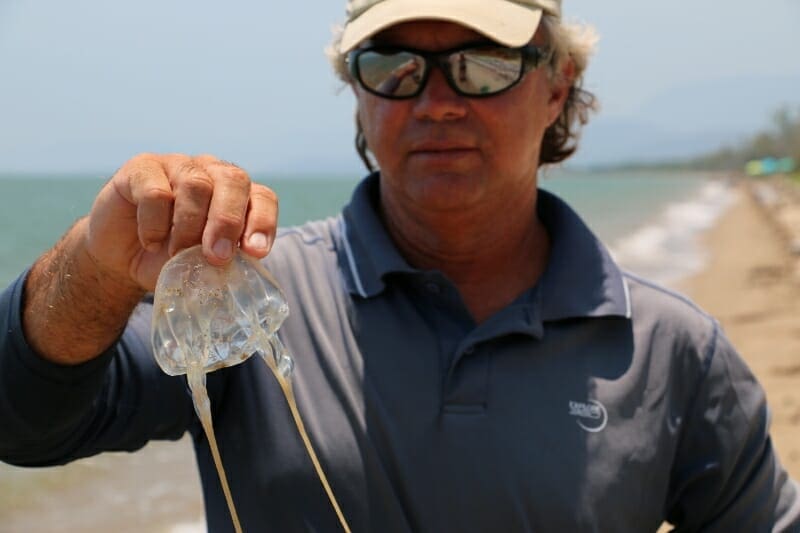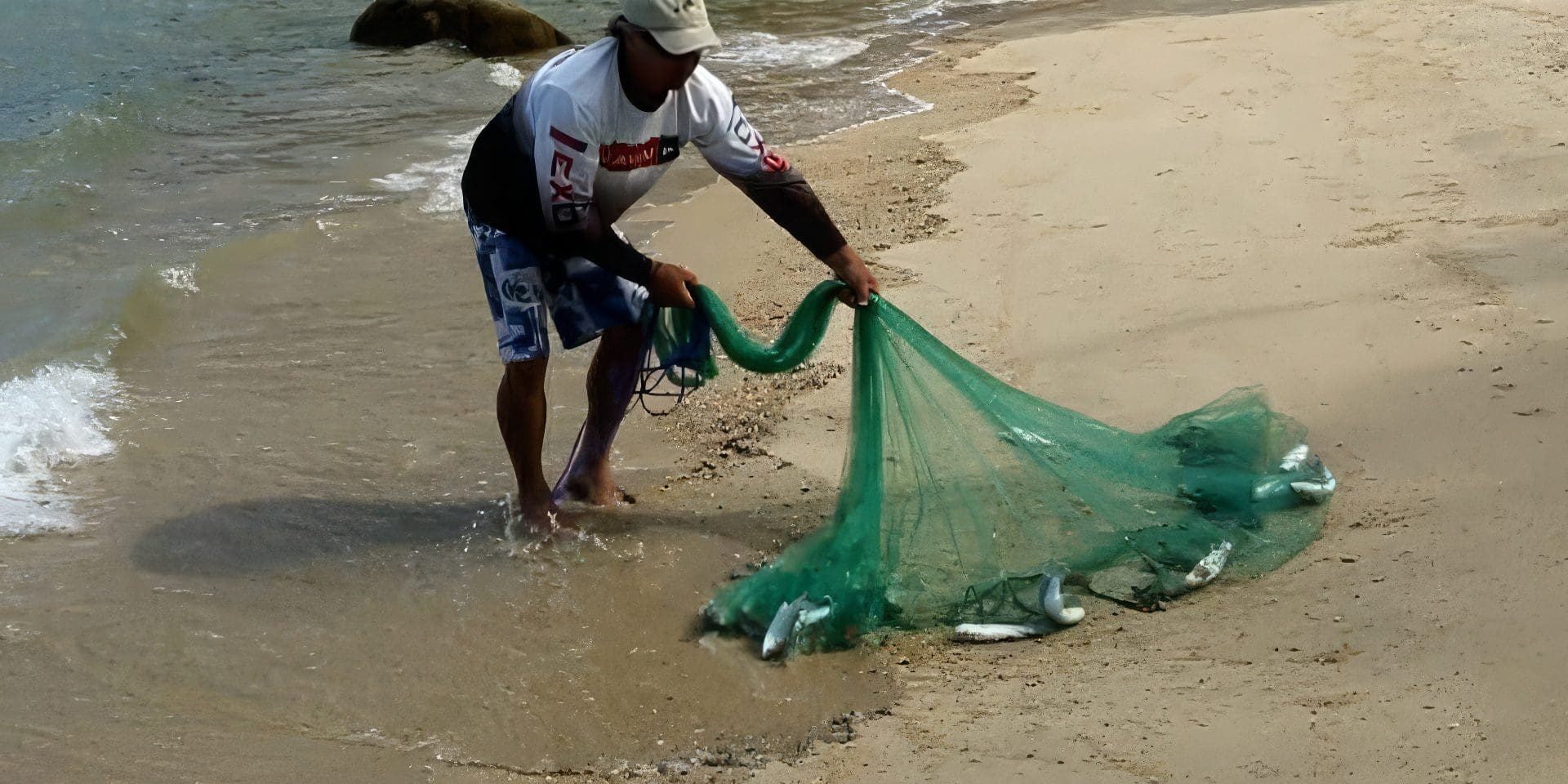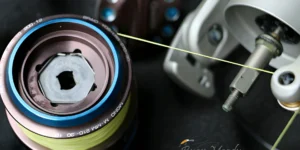It’s important to use the right cast net type when chasing a net full of juicy live bait.
I have been using cast nets for catching bait for over 30 years now and they’re a quick and easy way to fill your live bait tank.
Cast nets are popular in most countries around the world – unless they are illegal. (Check regulations in your state or county).
Most people use the standard bottom pocket net and for sure, that’s my net of choice for most applications you can reach on foot.
But that’s not the only cast net type there is!
In this blog I’ll look at the three main cast net types and their applications.
CAST NET TYPES
- Bottom Pocket
- Drawstring
- Top Pocket
BOTTOM POCKET
Shallow habitats such as beaches and behind mangroves for live baits such as poddy mullet, silver biddies/mojarra and garfish/ballyhoo are perfect for a bottom pocket cast net.
They have pockets at the bottom, weighted with a lead line to stop bait from escaping.
Bottom pocket cast nets are typcially used in shallow water under 1 metre.
We demonstrate how to throw a cast net from your wrist, and not get covered in muck, in our popular video here.
DRAWSTRING CAST NET
I use a drawstring cast net for deeper locations around structure for species like herring/threadfin.
When I say deeper, I mean when casting from jetties or boats. Deep enough for the net not to touch the bottom.
Unlike the bottom pocket which drags along the bottom.
The drawstring cast net closes into on big pocket under the bait when you pull on the lanyard.

TOP POCKET CAST NET
Top pocket is my cast net type of choice for prawns as they like to flick up the net.
In this video we examine the three main types of cast net types for catching live bait and their different applications. We look at depth of water, mesh size, cast net size and the kinds of live bait to target.
HOW TO THROW A CAST NET
For detailed instruction on HOW TO THROW A CAST NET off the wrist without getting wet and covered in muck, check out our previous post on the topic here.
This video has gone viral on YouTube with over One Million views so even if you use a cast net, check it out as it a method you can use to throw into the wind, under low hanging branches and best of all you don’t get covered in muck.
How to throw a cast net off the wrist.
WHERE TO THROW A CAST NET TO CATCH THE MOST BAIT?
Many people know one or two locations to successfully catch live bait.
But after 30 years as a charter guide I had to discover many more.
Manly because my charters began at 7 am. Every day the tide height, strength and wind direction were different.
Yet I had to catch bait quickly before the fishing day.
So by observing for many years I have developed a huge arsenal of locations to catch good bait quickly.
You can learn all my techniques, tricks and locations, in my locating livies course.
RESPONSIBLE USE OF CAST NETS
Please check the regulations for use in your state as there are several states in Australia where cast nets are banned.
One of the main reasons for this is the by-catch of small bait not required for fishing.
PLEASE practice responsible use of your cast net for catching bait. Return any by-catch to the water as quickly as possible.
Clean out your net each cast right there and toss them back. Not only are many babies of the food and sport fish we later want to catch (when they grow up BIG) but there are also many prey species that are an important part of the ecosystem.
It really saddens me when I come across innumerable small dead fish on the beach left by someone using a cast net.
DANGERS USING CAST NETS
Another consideration we need to be aware of especially in northern Australia are box jellyfish and crocodiles.
Be very mindful when wading into shallow water. Check there are no deeper drop offs nearby where a crocodile could lurck.
Most bait catching locations are shallow and I show you how to catch good live bait in all conditions in my course Locating Livies.

My previous post covers stingers in northern Australian waters and how to remove the tentacles when you get a net full.
How to remove box jellyfish from your castnet.
You’ll also see what happens to your skin when you get stung. It burns! Hence why I developed my technique to throw a cast net off the wrist.
We also cover how to fix your cast net here; Repairing your cast net.
And for a look at one of the many locations I frequent to catch my bigger live bait, check out my post on catching live bait with a cast net at beach creek mouths.
WHERE TO PURCHASE A GOOD CAST NET?
It’s becoming increasingly more difficult to purchase good quality cast nets. The ones I use in the video (filmed in 2016) are no longer available. Hence I designed sourced and now import my own. They will be available from 11th may 2023 in our RMF shop.
MORE IMPORTANT THAN CAST NET TYPE IS WHERE YOU THROW IT!
If you are interested in turning catching live bait into an exciting persuit instead of a frustrating chore, check out our online course, Locating Livies.










